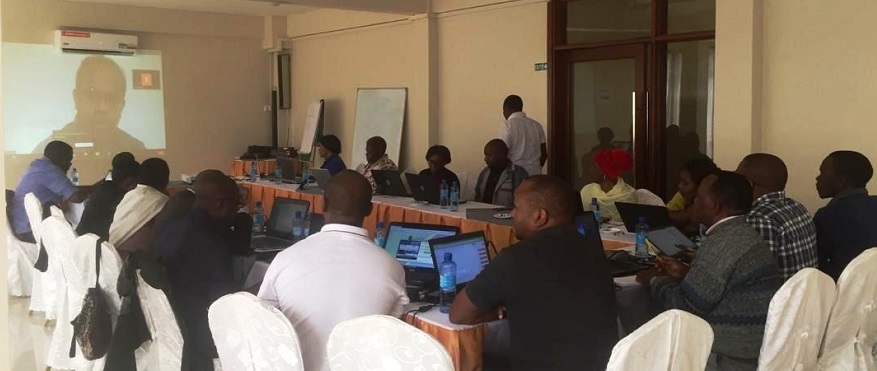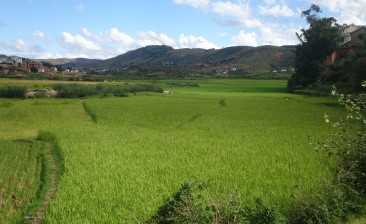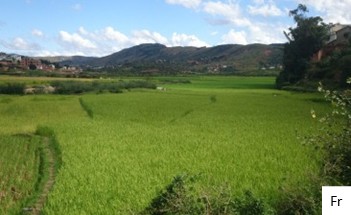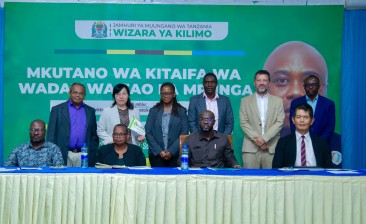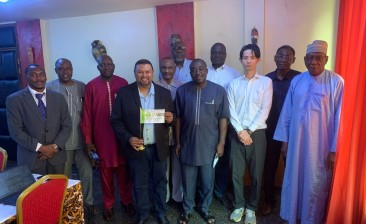Tanzania, August 2020
CARD Working Week for developing NRDS-II Project Concept Notes in Tanzania
Tanzania is one of the few East African countries that has a long tradition of growing rice. Rice has now become the second most important staple food crop (after maize) for the population. Its strategic importance in the food and nutrition security is acknowledged by the Government of Tanzania it Long-Term Perspective Plan, National Five-Year Development Plan, National Agriculture Policy 2013, Tanzania Agriculture Food Security Investment Plan, and Agricultural Sector Development Plan Phase II (ASDP-II). Tanzania joined the CARD initiative in 2009 and developed National Rice Development Strategies (NRDS) with an aim of doubling domestic rice production by 2018.
Government data shows that the milled rice production more than doubled from 867,000 tons in 2008-09 to 2,219,000 tons in 2017-2018 [1] . A 23.3% raise in area under cultivation (23.3%) and a 53.8% gain in on-farm productivity level (from 1.3 t/Ha to 2.0 t/Ha) contributed to such a hefty increase in total production under the NRDS. Nevertheless, Tanzania imported 236 tons of long grain milled rice in 2018, mainly from Pakistan and Thailand [2]. While it is possible that at least some of these imports are meant for niche consumer market segments in the country and the region; Ministry of Agriculture claims that against an estimated total consumption requirement of 990,044 tons of rough rice, the current levels of domestic production has put Tanzania as a rice-surplus country in the continent.
In an effort to further revive the local production for the regional markets; government of Tanzania has joined the second phase of CARD in 2019 and requested technical assistance from CARD in preparing a second phase of NRDS (NRDS-II; 2019-2030). A taskforce was set up for this purpose and mandated with the collection of the required data and drafting of the NRDS-II under the guidance of CARD, FAO and JICA. Following validation of the drafted NRDS-II document by the national stakeholders, the Government of Tanzania officially approved the NRDS-II as an overall framework for the advancement of the rice sector.
NRDS-II aims to sustain rice self-sufficiency, contribute to the regional self-sufficiency, and become a rice market leader. The strategies focus on further enhancement of quality, quantity and value of the locally produced rice. The NRDS taskforce recently drafted an implementation framework for the NRDS-II. Subsequently the taskforce requested CARD Secretariat to provide technical assistance in developing bankable project concept notes that shall lead to concrete implementation of the NRDS-II.
CARD activity and the results
Corona virus disease 2019 (COVID-19) has affected conduct of CARD missions in several of the CARD member countries. Most of the CARD activities are orchestrated through virtual means and minimal support from country offices of CARD Steering Committee members. In Tanzania, JICA and FAO have been staunchly supporting the NRDS-II process. Since COVID-19 has not established as a serious threat in Tanzania, the NRDS taskforce arranged a working week for its members at Panama Hotel, Moshi between 24th and 28th of August, by following the rules and regulations of the government of Tanzania. Regional Consultant of CARD and JICA country office personnel joined the meeting via Zoom, an online based meeting platform. Through internet, the taskforce members who gathered at Moshi (physical mode) and the CARD consultant and JICA country office personnel (virtual mode) were able to seamlessly interact with each other visually and vocally over the projected screen at the conference facility.
CARD’s consultant first briefed the participants on the objectives and expectations from the working week. By recalling the goal, the consultant reminded the participants of the four strategic objectives (SO) set under the NRDS-II viz., (1) improvement of climatic resilience of local production, (2) enhancement of regional market competitiveness of Tanzania rice over Asian and regional rice, (3) Sustainably orientation smallholder rice farming system toward national and regional rice markets, and (4) expansion of rice area under irrigated, rainfed lowland and upland ecosystems. The consultant further explained the importance of contribution of project concept notes that will be developed through the working week to the attainment of these strategic objectives.
In order to prioritize the most effective and most urgent elements from amongst an array of intervention options enumerated in the NRDS-II document; the participants scored the major interventions along the rice value chain through direct ranking method and by using pair-wise scoring matrix. Based on the cumulative scores of each intervention; the participants ranked the priorities as shown in table 1 below: –
Table 1: Priority elements identified by the taskforce members during the working week
| SO | Purpose | Prioritized interventions | Participants’ remarks |
| SO.1 | Improve Climate resilience (market-oriented varieties) | Varietal development | Develop at least 2 concept notes in the context of ‘climate resilience’ on varietal development & extension services |
| Extension services (Soil, Crop & Water Management) (including mechanization)
Crop insurance |
|||
| SO.2 | Enhance Regional market competitiveness of Tanzania rice over Asian and regional rice | Policy stability and coherence with regional economic communities (RECs) | Develop at least 3 concept notes in the context of enhancing regional competitiveness of Tanzania rice
|
| Quality (technical and regulatory) enhancement | |||
| Cost-saving technologies (through mechanization & other means) | |||
| SO.3 | Sustainably orient smallholder rice farming system, toward national and regional rice markets | Improved technologies (including mechanization) | Develop at least 2 concept notes in the context of economic sustainability & market orientation of ‘smallholder farmers’ |
| Access to finance | |||
| SO.4 | Expand rice cultivable area under irrigated, rainfed lowland and upland ecosystems | Establishment of new irrigation schemes and rehabilitation of existing/old schemes | Develop 3 CNs in the context of ‘expansion of area under rice cultivation’ in all ecosystems |
| Land tenure/policies | |||
| Engagement of private sector |
The participants noted that empowerment of women and youth will be a cross-cutting priority under the NRDS-II and hence their roles will be integrated into all the concept notes. Following the consensus (Table 1), the taskforce members decided to develop a total of 10 project concept notes under the 4 strategic objectives. The participants also decided to work in three groups (A, B and C) after ensuring that each group had included members from the fields of research, policy and extension services.
The consultant explained a one-page CARD format for designing the project concept notes. The importance of integrating the overall objective, specific objectives, project components and activities and expected results of each concept note with the overarching goal and strategic objectives of the NRDS-II was emphasized by the consultant. After completing the first concept note by the 3 groups, a peer-review session was organized so as to enrich and unify the understanding of the design and content preparation of the concept notes by all the participants. The participants then proceeded with the group-work on the development of the remaining project concept notes. Upon completion of this task, the participants collectively peer-reviewed all the project concept notes and consolidated the reviews.
Way forward
CARD will provide the necessary technical assistance in fine-tuning and finalizing the 10 project concept notes developed by the participants. The finalized concept notes will be uploaded in the CARD website. CARD Secretariat will seek an official approval by the Ministry of Agriculture for fund-matching activities for the execution of these concept notes. Under this activity, CARD will analyse the alignment of the specific objectives of the concept notes with country-portfolios of various development partners and private sector under TAFSIP. Based on the alignment and synchronization of the funding cycle, NRDS taskforce with assistance from CARD and Ministry of Agriculture will lobby for funding the implementation of the concepts.
